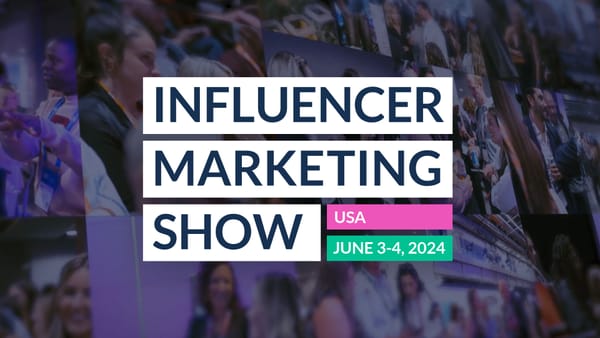We spoke with featured influencer agency, Open Influence, to find out what brands should be measuring, how they go about influencer selection and the ways the industry has changed since the company was founded.
What sets you apart from others out there in the space?
Our approach is unique. Though we are extremely tech and data-focused, we put the human element at the centre. At our core, we are in the business of delighting and inspiring audiences through great content. Creators have a special connection with their audiences, and it is our job to make sure we are working with the right creators to deliver a brand’s message and doing all we can to make sure that message is the best it can be for their audience. We have built unique tools and leveraged and developed bleeding edge AI and Machine-learning technology to truly track what and who influences people. Additionally, we have pioneered processes and industry best practices that help optimise for the human aspect of working with content creators. We see our team of engineers and social media enthusiasts as dedicated experts that are trailblazing the path in this new industry.Choosing the right influencer is a challenge many still face but it is vital to the success of a campaign. What’s your influencer selection process?
Our industry-leading account managers rely on our proprietary platform that boasts the industry’s largest collection of influencer data that leverages machine learning and artificial intelligence to analyse tens of millions of pieces of content and more than 300B data points. Not only do we analyse data around our influencers and their audience, but we analyse each piece of content that a creator creates as well as the interactions between them and their audience. By doing this, we are able to effectively understand an influencer by knowing what they share and what their audience finds interesting or influential. We are able to quantify their influence in a way that is actionable and easily surfaces the right influencers for any task. Leveraging advanced image recognition software, we identify and tag influencer content into millions of attributes, including people, colour palettes, landscapes, logos, camera angles, etc. This “content first” approach allows us to uncover hidden insights and value that helps us make smarter decisions and protect and optimise our clients’ investments. Once we identify influencers with the necessary qualities, we then analyse contextual engagement to identify how strongly their audiences respond to the specific topic. These capabilities allow us to put together highly relevant campaigns – built on informed creative decisions – that outperform industry benchmarks. By creating a contextual influencer taxonomy, our intelligent program is capable of filtering hundreds of thousands of influencers and even build look-a-like influencer models. Depending on our clients’ needs, we can efficiently match them to relevant influencers with the highest chance of converting, and can even forecast and estimate post-performance. As a result, the process of finding the perfect, highest-converting content creators has become less resource-intensive, less time-consuming, and far more accurate resulting in a much more thoughtful and surgical approach to influencer marketing.What metrics do you offer?
We are obsessed with data. We measure followers, impressions, views, impression and view rates, engagements, relative engagement rates, engagement per keyword/label (a label refers to a characteristic in a piece of content, such as “beach” for example), clicks, CTR, purchases (and all the derivative metrics such as CAC, ROAS, AOV, etc). We analyse all metrics by influencers as well as post to truly assess results and performance.What should brands be measuring?
First, determine your business objective. Is it to drive brand awareness, shift brand perception, drive sales? Defining clear goals is the first step to effectively select your KPIs (reach, engagement, purchase intent, sales, sentiment) and measure the effectiveness of your influencer marketing strategy. How does pricing work?
We tailor each campaign to our clients’ needs and use our technology and dataset to forecast and guarantee deliverables. From the onset, we believed that our clients should have a clear set of deliverables before agreeing to work with us.
What rights do brands have to the content being produced?
It depends on the campaign requirements. We make sure to tailor the usage rights for our clients needs to ensure that they aren’t paying for usage rights that they are not using. For example, influencers tend to charge significantly more for full “work for hire” content usage rights, and so unless the client really wants to leverage that content longterm and wants the full flexibility in how they can use it, we recommend to tailor the rights to what the actual uses are in order to keep costs down and drive value for our clients.How has influencer marketing changed since the company was founded?
The first major change that essentially made the industry possible was a massive influx of talent. This trend was enabled by the confluence of the mobile revolution and social media making content creation and sharing more accessible and easy. The result was a shift from a supply-side talent agency model to a demand-side model focused on driving value for brands.The next major changes came as the industry matured. There was an increase in regulation, as well as standardisation in the metrics and KPIs used by the industry. Initially, disclosure requirements were loosely respected by brands and we would often spend a significant amount of time coaching brands on the importance of adherence to FTC guidelines. Fast forward to today and disclosure requirements are a given in the US and in many other markets. Additionally, new data protection and privacy regulations have had an impact on the industry- take GDPR and CCPA for example. In terms of metrics and KPIs, we have seen a shift from high-level arbitrary metrics such as follower count being the standard to mid-funnel metrics and even bottom-funnel metrics being the standard (such as views, engagements, clicks, and purchases).The influencer industry is highly dynamic and ever-changing. There are constantly new platforms, features, and players emerging every day. It’s all very exciting.How can our readers get started?
We are here to help you, feel free to email us anytime at business@openinfluence.com.









